[FIX] Cloudflare ‘Error 523: Origin is Unreachable’
Some users are encountering the ‘Error 523: Origin is unreachable‘ when trying to access certain websites from their default browser. In most cases, affected users are saying that the same issue is occurring with multiple websites that are protected by Cloudflare.
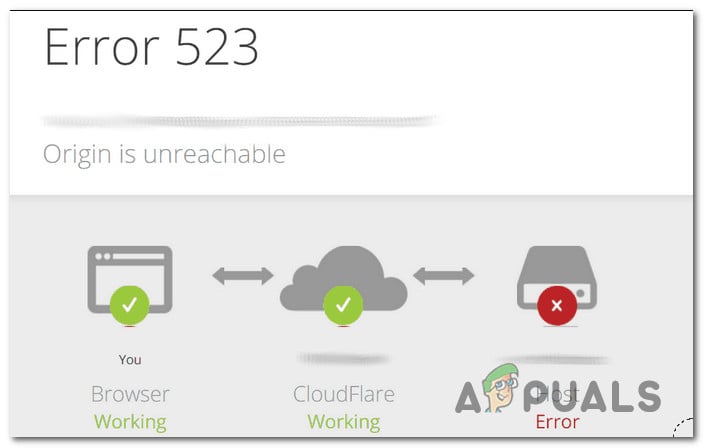
After investigating this issue thoroughly, it turns out that there are several different causes that might produce this error message in your browser. Here’s a shortlist of potential culprits that might be responsible for the apparition of this error code:
- Ongoing Cloudflare server issue – If you’re seeing this error code with every website protected by Cloudflare that you’re trying to visit, it’s possible that Cloudflare is currently having some issues with the server that’s in charge of your area. In this case, all you can do is confirm the problem and wait for the involved developers to fix the server problem on their side.
- Inconsistent DNS – Another potential cause that might cause this error is an inconsistent DNS assigned by your ISP. Several affected users facing the same problem have confirmed that the issue was fixed once they’ve migrated their DNS to the range provided by Google.
- Interfering 3rd party firewall – As it turns out, an overprotective 3rd party firewall can also be responsible for this particular error. If this scenario is applicable, you can fix the issue either by whitelisting the ports used by Cloudflare or by uninstalling the overprotective AV suite altogether.
Now that you know every potential culprit, here are a couple of verified methods that should allow you to identify or fix the issue:
Method 1: Checking the Status of CloudFlare’s Servers
Since this status code is tied to CloudFlare, the first thing you should do is make sure that they’re not dealing with a server issue that’s beyond your control. It’s possible that you’re seeing the Error 523: Origin is unreachable error message due to the fact that the Cloudflare server in your area is currently down or is being re-routed due to a maintenance session.
Fortunately, there’s a quick way to check if the CloudFlare server that’s in charge of that particular website is affected. Simply visit the official Cloudflare status page, scroll down through the list of services, and locate the one associated with your particular location.
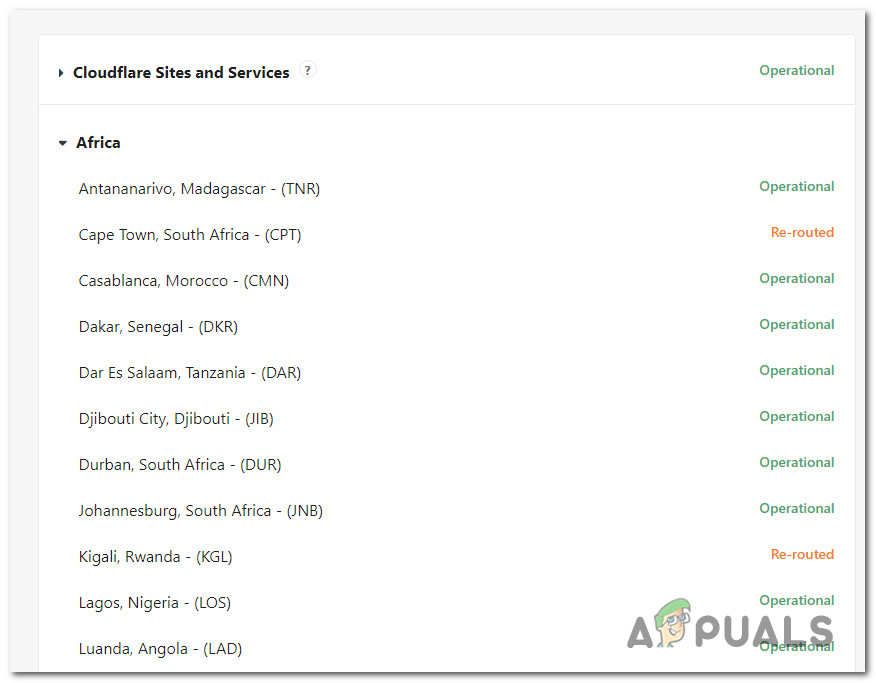
If the location in question is labeled as Re-Routed or Inactive, there’s a very high chance that you are dealing with a server issue that is beyond your control – In this case, the only thing you can do right now is to wait until the Cloudflare manages to fix their server issue.
On the other hand, if the investigation didn’t point towards any problem with Cloudflare, move down to the next potential method below.
Method 2: Changing the Default DNS
In case you are seeing the ‘Error 523: Origin is unreachable‘ error message with every website protected by Cloudflare that you attempt to visit, chances are are you’re dealing with an inconsistent DNS that’s preventing your computer from communicating with the host through Cloudflare.
Several affected users that faced the same issue with Cloudflare have reported that they managed to fix the issue by changing the default DNS (Domain Name System) assigned by their ISP to the equivalent supplied by Google – You can do this for IPv4 and IPv6 to cover both potential scenarios.
If you haven’t tried out this potential fix below, follow the instructions below to change the default DNS on your computer to Google’s Public DNS:
- Press Windows key + R to open up a Run dialog box. Next, type ‘ncpa.cpl’ and press Enter to open up the Network Connections window.
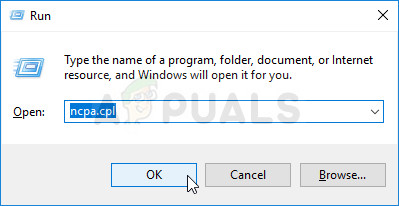
Accessing the Network Connections window - Once you’re inside the Network Connections window, go ahead and right-click on the connection that you’re actively using – Wi-Fi (Wireless Network Connection) or Ethernet (Local Area Connection). Next, click on Properties from the newly appeared context menu.
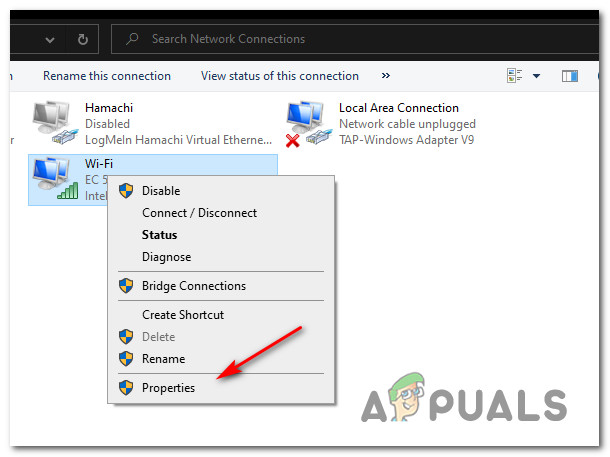
Accessing the properties screen of your network connections - When you’re prompted by the UAC (User Account Control), click Yes to grant administrative privileges.
- Next (once you’re inside the Ethernet or Wi-Fi properties menu), click on the Network tab from the menu at the top, then go to the This connection uses the following items section.
- Once you arrive at the correct location, click on the box named Internet Protocol Version 4 (TCP / IPv4), then click on the Properties button below.
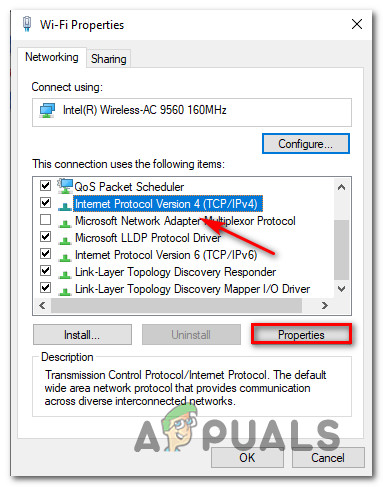
Accessing the IPV4 Settings - Inside the IPV4 settings, click on the Properties button, select the General tab from the next menu, then check the box associated with Use the following DNS server address.
- At the next screen, replace the current values of Prefered DNS server and Alternate DNS server with the following values:
8.8.8.8 8.8.4.4
- Once you made the required modifications, check the box associated with Validate settings upon exist before clicking OK.
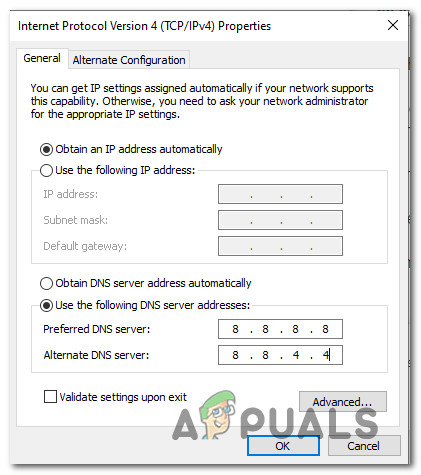
Changing the IPV4 server settings - Next, return to the root Wi-Fi Properties or Ethernet Properties screen, go to the Network tab and select Internet Protocol Version 6 (TCP/IPv6) before clicking the Properties screen.
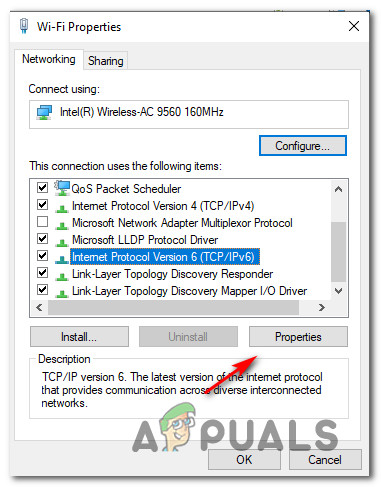
Modifying IPV6 settings - Next, repeat steps 5 to 8 once again, but this time, use the following values for Preferred DNS Server and Alternate DNS server to accommodate TCP / IPv6:
2001:4860:4860::8888 2001:4860:4860::8844
- Once this modification is made, check the box associated with Validate settings upon exist and click Ok to save the changes.
- Restart your computer once again and see if you are able to access the website that was previously throwing the ‘Error 523: Origin is unreachable‘ error once the next startup is complete.
If the same problem is still occurring, move down to the next potential fix below.
Method 3: Disable / Uninstall 3rd party Firewall
If you’re using a 3rd party firewall and you end up seeing the ‘Error 523: Origin is unreachable‘ error with every website protected by Cloudflare, changes are your security suite is blocking the connection – If you trust the websites that you see this error on, this most likely occurs due to a false positive.
As it turns out, there are several 3rd party firewalls that are known to cause this problem. Cylance and Comodo are the most commonly reported culprits.
If this scenario is applicable, the most elegant way of fixing the conflict is to whitelist the HTTP and HTTPS ports that Cloudflare uses:
HTTPS ports used by Cloudflare
- 443
- 2053
- 2083
- 2087
- 2096
- 8443
HTTP ports used by Cloudflare
- 80
- 8080
- 8880
- 2052
- 2082
- 2086
- 2095
Note: Keep in mind that the exact instructions for whitelisting ports in your 3rd party firewall will be different depending on the suite you’re using. Because of this, we can’t provide you with a definitive guide on this.
In case you don’t want to whitelist the ports or you can’t find how to do it on your firewall, follow the instructions below to uninstall the problematic firewall and eliminate the conflict:
- Press Windows key + R to open up a Run dialog box. Next, type ‘appwiz.cpl’ inside the text box and press Enter to open up the Program and Features menu.
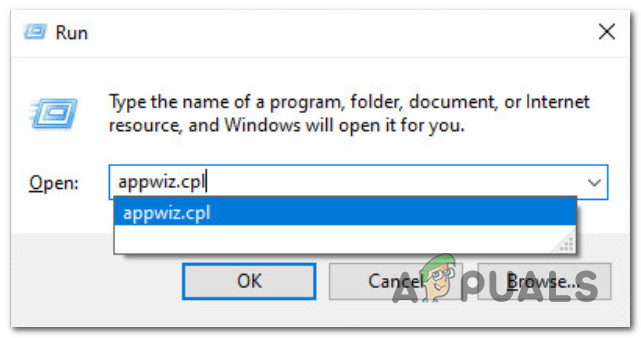
Accessing the Programs and Features screen - Once you’re inside the Programs and Features screen, scroll down through the list of installed programs and locate the entry associated with the overprotective firewall that you’re trying to uninstall.
- After you find the application, right-click on it and choose Uninstall from the context menu that just appeared.
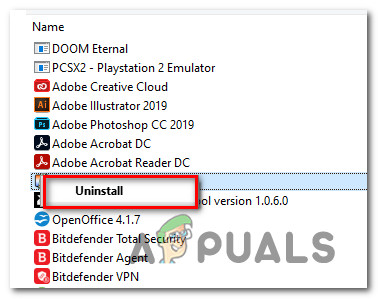
Uninstalling the problematic Firewall - Inside the uninstallation screen, follow the on-screen to complete the uninstallation, then reboot your computer and see if the problem is fixed once the next computer startup is complete.





